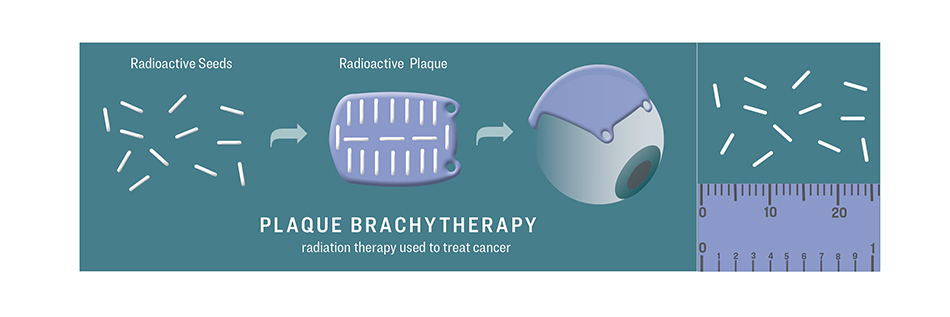
The John A. Moran Eye Center and Huntsman Cancer Institute at the University of Utah joined together in 2021 to add a comprehensive eye cancer service for adults and children, directed by fellowship-trained surgeon Eric D. Hansen, MD.
The new service is the only resource of its kind in a five-state region encompassing Utah, Wyoming, Montana, Nevada, and Idaho. Hansen works closely with experts at Moran, Huntsman Cancer Institute, and Intermountain Primary Children's Hospital to diagnose and develop innovative treatment plans for eye tumors and cancers.
"Eye cancer is a multidisciplinary disease that requires coordinated care among a team of uniquely trained specialists," says Hansen. "Until now, patients in the region have had to travel to other parts of the country for certain necessary treatments. We created this service to lift that burden and to provide patients with a full spectrum of oncologic care that is some of the best in the country."
Depending on their needs, patients receive care from a team that includes specialists in oculoplastics, medical and pediatric oncology, radiation oncology, interventional radiology, dermatology, and clinical social work.
Although eye cancer is rare, the most common forms include melanoma in adults, which can occur inside or outside of the eye; retinoblastoma, the most common pediatric eye cancer; and metastatic tumors—the result of cancer spreading from other parts of the body to the eye.
Diagnostic tools and treatments available through Moran’s ocular oncology service include minimally invasive biopsies; ultra-high-resolution imaging and ultrasonography; targeted radiation and advanced chemotherapy options; genetic counselors and a full array of genetic testing; and excellent eye prosthesis options.
With the addition of Hansen and the partnership of Huntsman Cancer Institute, Moran now offers care in all ophthalmic subspecialties.
"We are truly excited to introduce Dr. Hansen and this unique, integrated care to the Mountain West," Moran CEO Randall J Olson says. "The Moran Eye Center is known for providing exceptional care in the most complex of cases. Huntsman Cancer Institute provides patients with access to state-of-the-art, compassionate cancer care. Dr. Hansen and the team will provide much-needed hope and healing to eye cancer patients."
Hansen completed a dedicated fellowship in ocular oncology at the Bascom Palmer Eye Institute at the University of Miami. Bascom Palmer is perennially ranked as one of the top eye institutes because of its leaders and innovators in the field. Hansen completed fellowships in vitreoretinal surgery and global ophthalmology at Moran. Hansen additionally treats medical and surgical diseases of the retina and vitreous, including retinal detachments, diabetic retinopathy, and age-related macular degeneration. He dedicates significant time to Moran’s Global Outreach Division to increase access to eye care in Utah and low-resource countries.
New Surgeries

In 2021, Eric D. Hansen, MD, along with Huntsman Cancer Institute radiation oncologist Don Cannon, MD, and medical physicists Jessica Huang, PhD, and Hui Zhao, PhD, established the inaugural ocular brachytherapy program at the University of Utah.
Often used for treating patients with uveal melanoma, this integrated service is critical for treating tumors and cancers that affect the eye.
Brachytherapy is a radiation treatment in which rice-sized pellets, or "seeds," are placed very close to the tumor for a short period. This provides a large dose of radiation to the tumor while minimizing exposure to the rest of the body.
Surgery is performed under anesthesia to suture a small seed-filled disc, known as a plaque, to the eye. The plaque is removed via a second surgery several days later.
The radiation plan for each patient is designed to optimize treatment outcomes. Hansen utilizes state-of-the-art medical and surgical treatments to maximize vision following radiation. He also is bringing research collaborations to the program to advance the science behind effective patient care.